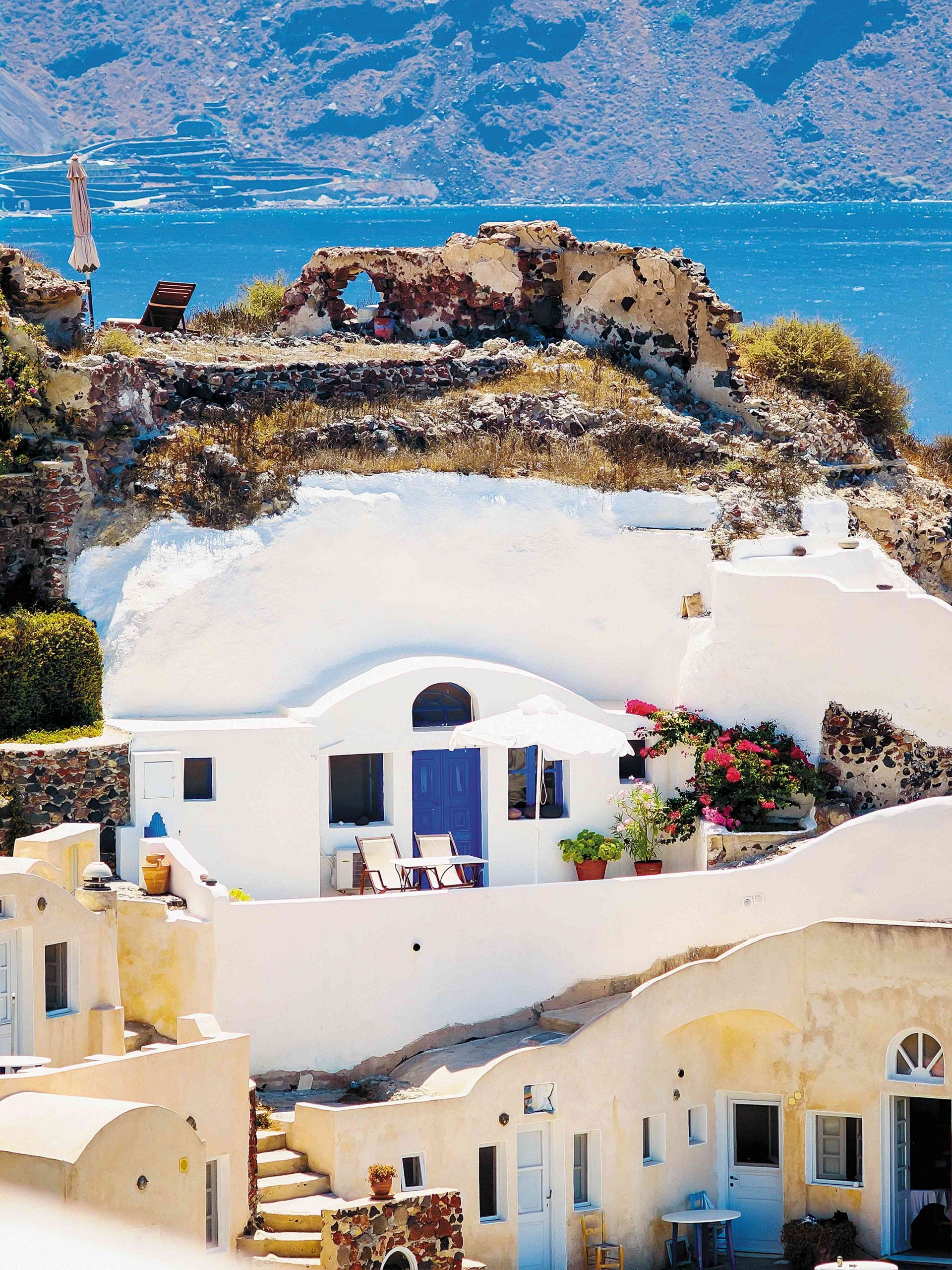“The coast is full of subterranean structures. They’re springing up everywhere,” explained Kyria Eleni, who lives in a village in the prefecture of Rethymnon. On a small bay on the south coast of Crete there are four houses “buried” in the hillside and a few more in the making, all of them large-scale excavations carved into the landscape. There were also plans in nearby Plakia to build underground tourist accommodation, dug into the monumental cliffs of Paligremnos at one end of the bay, but the project was cancelled after legal challenges from the municipality and other authorities. Still the “adventure” has left its mark—literally—in the rock.
The trend in underground accommodation units, which are currently appearing at a dizzying pace (mostly for use by the tourist industry) isn’t restricted to Rethymnon; it’s a new feature of other beaches and hillsides around Crete, as well as on Tzia, Paros, Tinos, Sifnos, and Serifos. “Unfortunately, it’s not a matter of trends, it’s a result of legislation that increased the building coefficient for such structures,” says Ioannis Spilanis, Professor at the Department of the Environment at the University of the Aegean and director of the Aegean Sustainable Tourism Observatory. Spilanis is referring to a 2012 building code, which awarded a premium to this type of construction. There are certain requirements however, explains Dimitris Xynomilakis, president of the Association of Architecture Graduates of the Panhellenic Association of Architects. “A key element of the provisions in the new building code is that the terrain has to be fully restored to its original contours, as these were recorded prior to the excavation and prior to the study. It must also have a one-sided elevation. “That being said, he isn’t negatively pre-disposed towards structures such as these. “Sometimes an above-ground structure can detract from the environment. Theoretically, a semi-subterranean building that’s fully compliant with the requirements laid down by law can be a good solution, meaning it impacts less negatively on the landscape.”
Irreversible interventions
There are some extremely impressive underground structures are built in full accord with both the spirit and the letter of the law, though there are far more projects that skirt regulations. The Association of Cycladic Architects sounded the alarm back in 2022: “Outsize excavations, irreversible interventions, gigantic structures on sensitive slopes, two-story underground structures, oversized openings, a failure to restore the surrounding lie of the land, using the excavated material as filler on slopes,” were all identified as problems.
Even when the legal regulations are followed precisely, there can still be issues. “They cause enormous damage to the environment, especially where the ground is hard and an area larger that the building’s perimeter has to be excavated,” says Spilanis. He explains that building outside settlements on a large scale is detrimental to the landscape, biodiversity, and groundwater flows. “Building outside cities, towns or villages increases the environmental footprint by 100%. It also places a burden on the municipalities on whose outskirts the underground structures are built, which need to extend the infrastructure required to provide their services.”
Concerns regarding the safety of such underground structures are also a growing issue, highlighted in the Greek Ombudsman’s special report on sustainable tourism development. The report notes that the new building code led to the “indiscriminate expansion of underground construction both in areas where such structures are common (e.g. Santorini), as well as in new areas where the rocky terrain does not favor their construction.” The report warns that “Measures must be taken to mitigate the potential risk of such buildings collapsing, but also to create an institutional framework that will determine, using specific multifaceted criteria, whether the construction of underground buildings is even feasible at given sites.”
Underground constructions have traditionally existed in Greece, especially on Santorini. However, such structures were small buildings within settlements, designed with clever ventilation practices, and built to provide protection from various dangers such as natural phenomena. “The old cave houses also led to the existing land being used more intensively, rather than to an expansion of the settlement,” notes architect and urban planner Irini Frezadou. “These modern underground structures do just the opposite; they are a crime against the urban planning and zoning in force today. They contribute to the extensification of land use, meaning they extend out into areas outside the city plan.” Frezadou also points out: “The construction of the old subterranean structures produced an attractive flow between the private, public and non-public. So the terrace of one home could serve as the veranda of another, or even as part of the street, contributing to the village’s social cement—which does not, of course, apply today.”
Are we really saving energy?
Architects are looking into ways to make these new underground constructions as sustainable as their traditional antecedents. “By studying traditional architecture in depth, we can identify the fundamental principles that make it ‘sustainable’ and perfectly adapted and friendly to its environment,” says Eleni Maistrou, architect, Emeritus Professor of Athens University and President of the Architectural Heritage Council of the Society for the Environment and Cultural Heritage. “We derive certain basic principles from traditional architecture, which we then strive to achieve through our own designs. One of these is integrating structures harmoniously into their natural environment and adapting buildings to their terrain and landscape, without intervening in the geomorphology and topography of the site. Other defining features of traditional structures are their small scale, the way their color adapts to the landscape, and their bioclimatic nature, which they achieve through their stone walls, well thought-out and correctly oriented openings, and their use of semi-open spaces.” The question of course is to what extent contemporary construction on the Cyclades is compatible with the above principles. There are questions about energy consumption required for these large excavations and the management of the extracted materials. “We should point out that underground structures are incentivized with a significantly increased building coefficient, because it is assumed that they will require less energy over their lifetime,” says Maistrou. “However, employing the bioclimatic principles of modern architectural design enables energy savings to be achieved in far simpler ways.”



